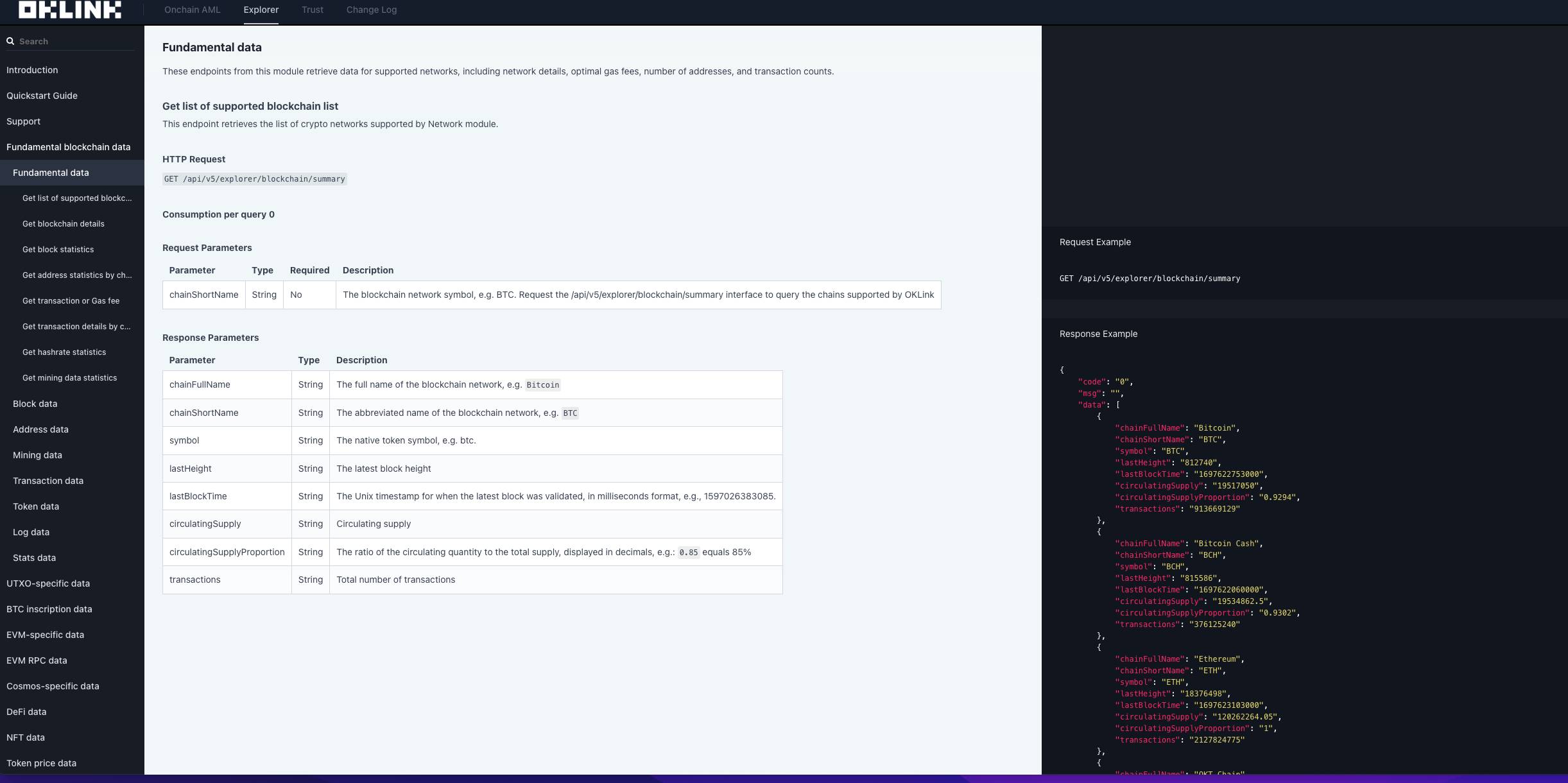In the early days of computer science development more than 40 years ago, the earliest API (Application Programming Interface) appeared to realize data sharing and exchange between different applications; with the popularization of the Internet and cloud, API has gradually become ubiquitous.
Now in the Web3 field, as most projects and institutions begin to focus on data and application innovation, API is also becoming increasingly important. In communication with Victor, the product manager of OKLink, he also stated that "whether it is a blockchain browser or a chain data service provider, API is indispensable."
1. Why is API "indispensable"?
More and more people are trying to integrate products like ChatGPT into their daily work routines, using them for brainstorming, text summarization, retrieval translation, or email writing. All of these rely on API: just like the "AI technology amplifier", API can enable complex AI technologies to be quickly integrated into more developers' and institutions' applications, and also allow users to use AI more easily, thereby promoting the widespread adoption and explosive growth of technology.
From this perspective, many of the AI applications we see today are actually based on the re-creation of API. After all, not all institutions have the ability to start from scratch, but with API, everyone has the opportunity to participate in the exploration and practice of more AI applications.
Global giants such as OpenAI, Microsoft, Google, Amazon, and Baidu have now opened up rich artificial intelligence API interfaces and are engaged in fierce competition around API. Because behind the API is the ecosystem: whoever's API can be chosen and used by more institutions and developers, will have a greater advantage in future competition.
In the Web3 world, API cannot be ignored either, especially in the field of Web3 data. Although on-chain data is theoretically open, transparent and accessible to all, it is often difficult to obtain directly. Especially when wallet or Non-Fungible Token applications need data from multiple blockchain networks, the situation becomes more complex, as the data structures and output formats are not entirely consistent, and it requires repeated calls to different API interfaces to obtain the required data, which is a huge and complex workload.
But for most Dapp and crypto application developers, massive calls to on-chain data are necessary when building product front-ends and providing services. From setting up nodes, to data screening, to successfully obtaining the required data, each step requires a lot of time. If there are good APIs that can solve the above problems, it will undoubtedly free users and developers from the massive on-chain data, and solve the data challenges faced by many enterprises and brands when entering the Web3 market. API can be seen as the empowering technology that truly drives the construction of the Web3 ecosystem, hidden beneath the surface of the blockchain.
Currently, many institutions providing blockchain data API services are emerging in the Web3 market, mainly blockchain explorers and on-chain data service providers. Taking OKLink's OpenAPI as an example, it currently supports on-chain data for more than 40 mainstream public chains, and provides token price data for more than 700 million tokens and Non-Fungible Tokens across over 200 blockchain networks, covering popular protocols such as runes, BRC20, and ARC20. "More importantly, we have adopted a one-stop API interface design. Users only need to use one API to obtain all data from more than 40 chains at once," said Victor.

2. What is the use of data API in the Web3 field?
After obtaining on-chain data through API, what can we actually do with it? Many people are not clear about this. In fact, these data are playing a role in many public chains, wallets, Dapps, and Web3 projects and platforms related to security.
The Meme narrative has recently become popular, and Sui, as the hottest L1 public chain, has also attracted widespread attention. If a wallet wants to integrate Sui into its own product and support data query and retrieval for popular Meme tokens, how should it do it?
The most direct way is of course to set up a node to obtain Sui chain data, but this will incur costs in terms of building nodes, synchronizing blocks, data storage, and maintenance. Compared to this, using the API service provided by OKLink is a more lightweight and efficient choice. Developers only need to make a simple API call to quickly obtain data on transactions, addresses, and tokens, and can track and visualize the transaction data of a specific wallet address to meet user market demand.
Media or on-chain analysts can also obtain data through API, and analyze specific data dimensions according to their needs, thereby obtaining more accurate and reliable on-chain information for their own professional work and investment decisions. Multiple Web3 markets and platforms can also use blockchain data APIs to obtain and update on-chain data in real-time, and present it visually on the platform front-end. So, although we may not be able to directly perceive the existence of on-chain data APIs most of the time, we have actually used or come into contact with related products and services to some extent.
In the future, more and more brands and enterprises will try to build Web3 applications or platforms, whether starting from scratch or upgrading and iterating on existing technologies, using blockchain data APIs will make these tasks simpler. And API, along with the development and maturity of these applications, will make on-chain data ubiquitous in the Web3 world.





